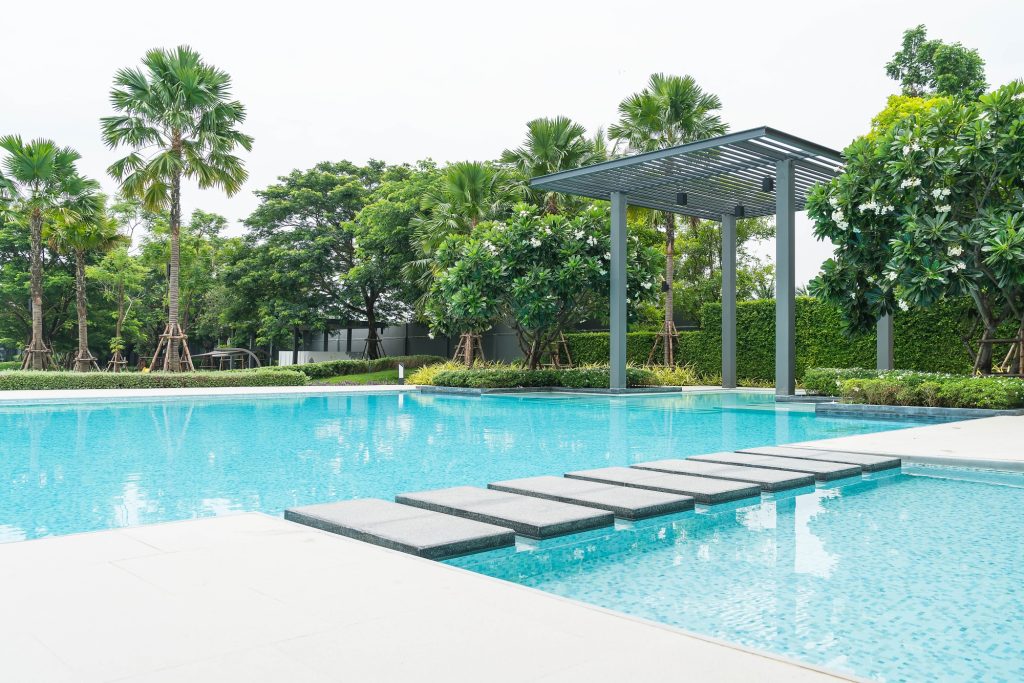By Alicia Stephens
A green pool is a sight that any pool owner would rather avoid. No one wants to look out at their pool and see green, murky water or an algae-covered pool when they should have crystal clear water. Many types of algae can thrive in a pool. Averting algae is therefore a crucial aspect of pool maintenance. Both pool owners and professionals should include a weekly preventive algicide in their routine. If you take a closer look, you can identify strategies that will prevent the growth of algae.
Understanding algae growth in swimming pools
First, the question is always about where algae comes from. It can be difficult to identify the source of algae in certain situations, where a pool may go from being crystal clear to a swampy green over night. Algae from various sources is constantly introduced into the pool. Algae from different species are found in natural water bodies, trees, soil and plants. Further, rain, wind, swimmers, and animals–specifically birds–are among the various contributors responsible for introducing algae to pools. A single bird can introduce up to 100 different types algae into the pool. Algae can enter pools from anywhere.
If you don’t take adequate measures to prevent algae, the spores will grow and multiply as soon as they are introduced into your pool. Unchecked, one algae cell can multiply to more than a million cells. This will lead to an algae bloom. To maintain clean, clear pools, it is important to prevent the growth of algae. It is much more difficult to deal with an outbreak than it is to prevent one.
Algae are classified into three types in the pool industry: yellow (or mustard) and black algae. Each type has distinct characteristics. The easiest type of algae to obtain is green. It’s also the easiest to remove. In most cases, pools that turn green can be quickly cleaned. In most cases, a registered Environmental Protection Agency (EPA), chlorine-based shock therapy, combined with good circulation and filtration can solve the problem. Yellow algae is also called mustard algae and has a yellowish color. It can be found at the bottom of the swimming pool. When disturbed (e.g. Brushing tends to cause it to spread (fluff) but it usually settles in the same place, making it difficult for you vacuum it up. It is not actually algae, but rather cyanobacteria. It is difficult to remove because it roots itself deeply into the plaster. Black algae can be eliminated most effectively by vigorous brushing, followed by the application of algaecide or chlorine. Before applying direct treatment, it is important to conduct a test on the affected area.
The post Cracking Algae Code: Navigating Pool’s Microscopic Invaders first appeared on Pool & Spa Marketing.








